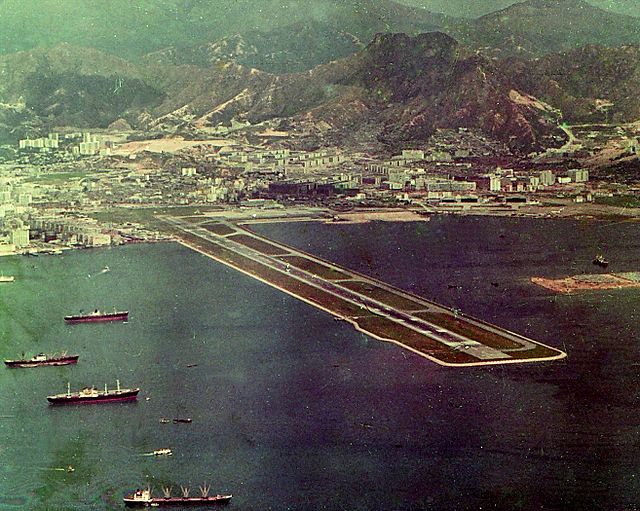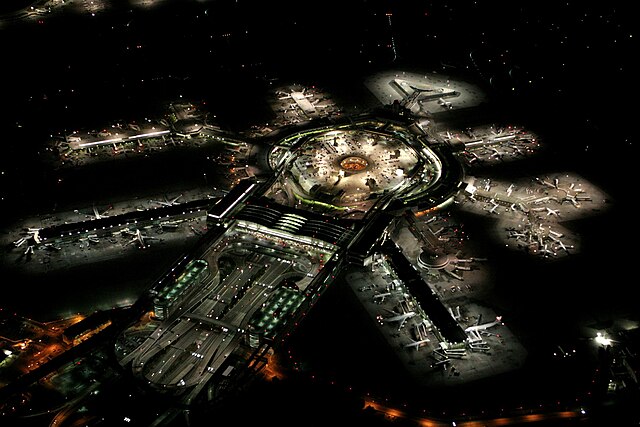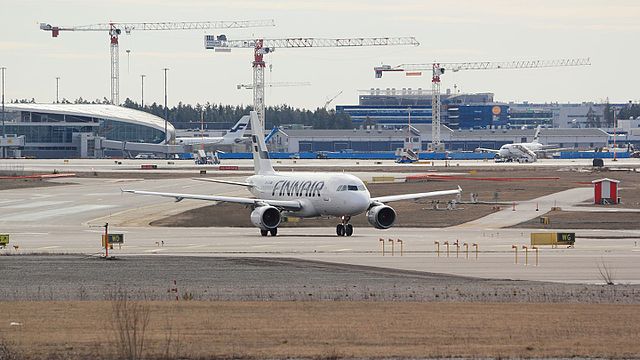Kai Tak Airport (IATA: HKG, ICAO: VHHH) was an international airport of Hong Kong from 1925 until 1998. Officially known as Hong Kong International Airport from 1954 to 6 July 1998, it is often referred to as Hong Kong International Airport, Kai Tak, or simply Kai Tak and Kai Tak International Airport, to distinguish it from its successor, Chek Lap Kok International Airport, built on reclaimed and levelled land around the islands of Chek Lap Kok and Lam Chau, 30 kilometres (19 mi) to the west.
Aerial view of Kai Tak Airport in 1998, the morning after its closure.
The airport was surrounded by high-rise buildings. The airport car park is at the centre, and offices are on the right of the photograph.
Aerial view of the airport in 1971, three years before the 1974 extension.
View of the airport in June 1971
An international airport is an airport with customs and border control facilities enabling passengers to travel between countries around the world. International airports are usually larger than domestic airports, and feature longer runways and have facilities to accommodate heavier aircraft such as the Boeing 747 and the Airbus A380 commonly used for international and intercontinental travel. International airports often host domestic flights, which helps feed both passengers and cargo into international ones.
San Francisco International Airport at night, with departure gates radiating out from the terminal building, aerobridges, apron and parked planes
Qantas Empire Airways International Short Empire flying boat services arriving at Rose Bay, Sydney (c. 1939)
Finnair Airbus A319 at the Helsinki Airport in Vantaa, Finland. Terminal expansion construction site in the background.
A flight information display system screen at Charles de Gaulle Airport's Terminal 2 showing flight arrivals








